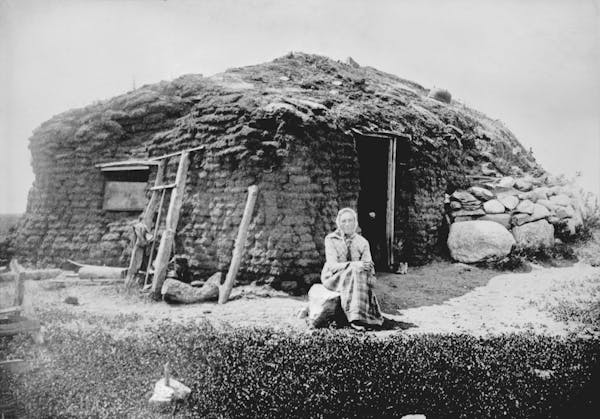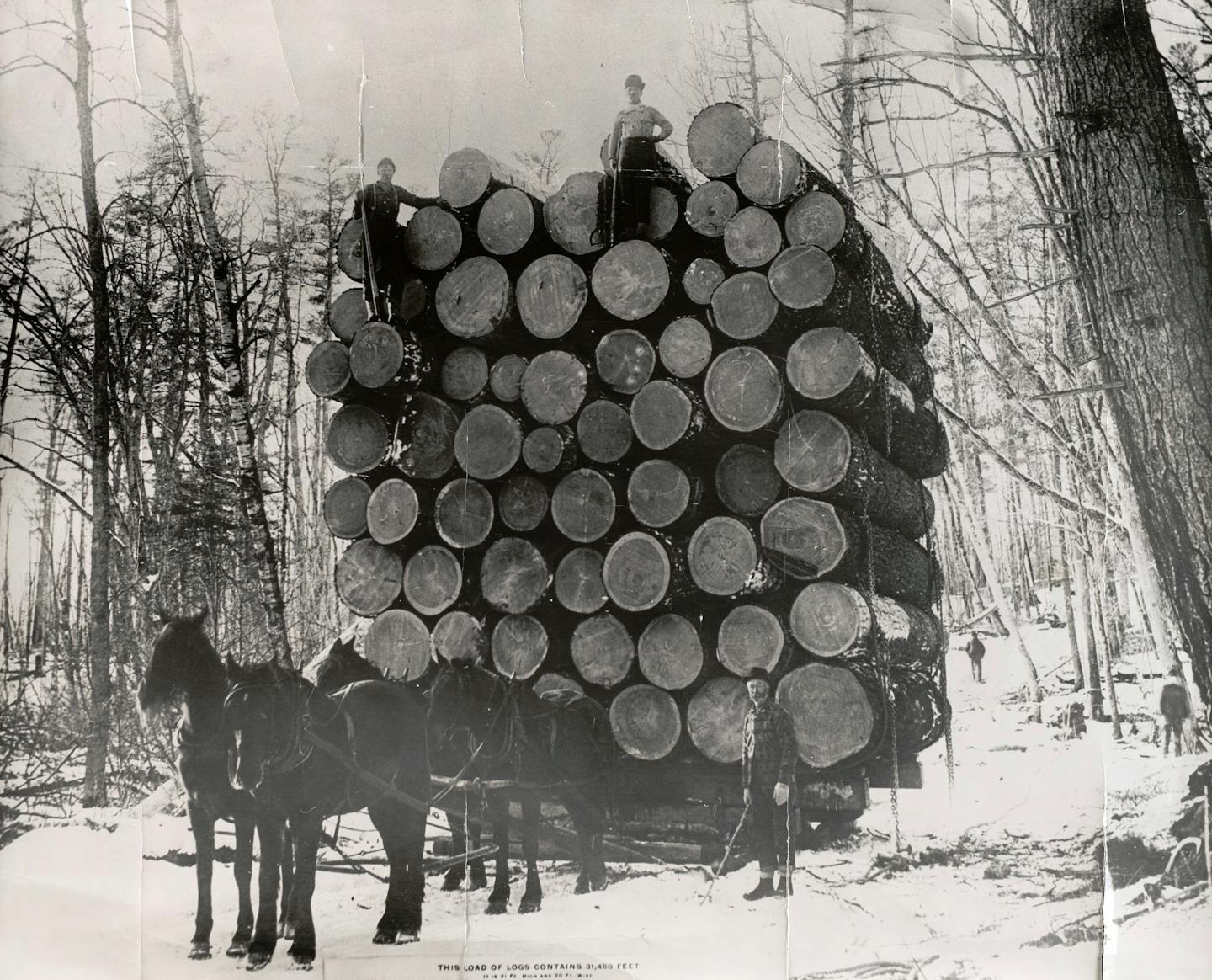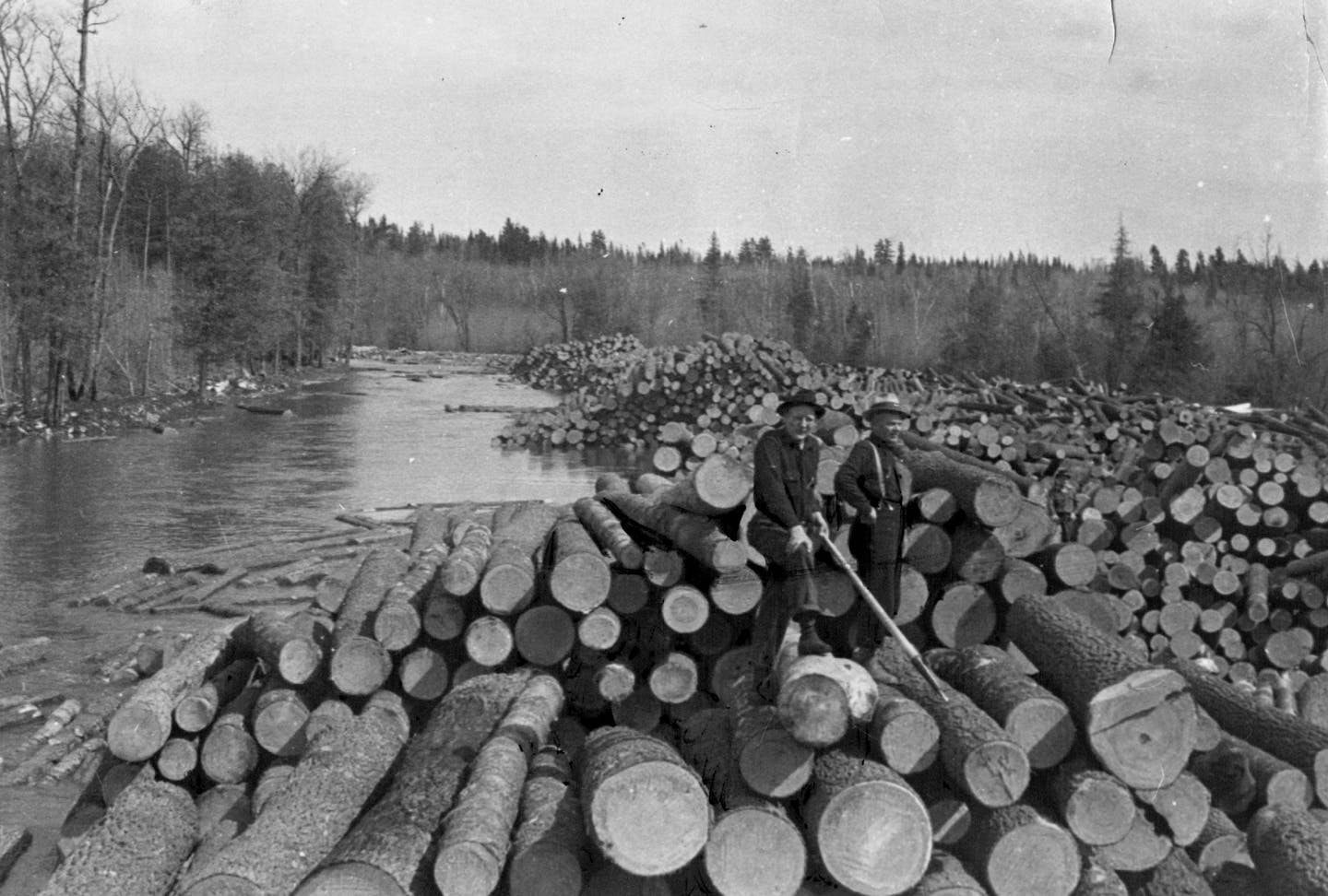Listen and subscribe to our podcast: Via Apple Podcasts | Spotify | Stitcher
Minnesota's legacy as the world's flour milling capital is well remembered today. But less is said about the state's other 19th-century industrial triumph: lumber.
The area that became Minnesota was once more than half covered in forest — 31.5 million acres of it. The vast supply of white pine trees helped make Minneapolis the top lumber market in the world by the turn of the 20th century, according to the Minnesota Department of Natural Resources.
Reader Jon Bostrom wanted to know more about the arduous task of moving all those trees. He became interested after learning about how logs were transported on the East Coast.
Bostrom turned to Curious Minnesota, the Star Tribune's reader-powered reporting project, to find out more about the industry's roots in this region.
Minnesota's abundance of trees in the early 1800s was a jackpot for the lumber-minded folks who saw the potential in this seemingly endless supply of white pines. Cities were cropping up, construction was on the rise, and by the mid-1800s Minnesota had a thriving logging industry.
But resources weren't as infinite as they first appeared. Minnesota's logging industry peaked in 1905. Nearly all of the state's white pine was harvested. Minnesota's forests are now comprised of aspen, oak and various hardwoods. Most of the business shifted to the Pacific Northwest. The logging industry continues here, but without the tree that started it.
'A veritable ocean of pine'
The state's abundance of white pine trees in the 19th century made for an unforgettable sight.
"As I stood upon the brow of Embarrass Hill ... one of the grandest sights I ever looked upon was in view, a veritable ocean of pine," said Richard Louis Griffin, whose recollection of the North Woods in the 1890s is highlighted in a Minnesota Historical Society online history of logging in the state.
The pine was cheap, versatile, strong and easy to cut. No other wood had so many desirable qualities, wrote St. Olaf College Prof. Agnes M. Larson, in her 1949 history of the state's pine industry.
"It furnished the early settlers with shelter," she wrote. "The logs for the cabin, the shakes for the roof, and the puncheons for the floor all came from the white pine."
To get timber to Fort Snelling, the U.S. government built the state's first sawmill at the convergence of the Mississippi and Minnesota rivers in 1821. The first commercial mill was built at Marine-on-St. Croix more than 15 years later.
The lumber industry was heavily involved in treaties that took land from Native Americans living in the area, according to Why Treaties Matter, a publicly funded exhibit on Ojibwe and Dakota treaties. The pine forests ceded in these treaties, including the "White Pine Treaty" of 1837, helped fuel the industry's growth in the mid-19th century.
Lumberjacks first set up logging camps along the St. Croix River, then in the Mississippi River Valley. When trees were exhausted, the camps moved on. The early mills were on these same waterways — which served as highways for teeming piles of white pine.
Lumberjacks lived in hastily made, tightly packed shanties where they slept two to a bed and were prone to pass bedbugs and lice. They didn't make much money, but they didn't spend much while doing the seasonal work.
They earned a reputation over time as hardy and rugged men whose feats of strength and agility defied the common man. And as they moved from camp to camp their lore grew. Enter Paul Bunyan and Babe the Blue Ox, two larger-than-life characters that have become symbols of Northern Minnesota.
Their legacy looms large in American folklore: Lake Superior, as everyone knows, was born of Bunyan's boot print.
A tricky journey
Logging was seasonal work. Trees were cut in the winter, when icy roads made it easier for horses to lug 20-ton sleighs. Ruts were cut for the runners, then watered down to create an icy path. It could be highly functional — or create deadly chaos.
"When the ruts were frozen solid, the heavy loads were moved along the road with ease," wrote Joseph Ansel DeLaittre, a former logging camp worker, in his book "A Story of Early Lumbering in Minnesota." "When the logging road had a steep down grade it was quite a trick to prevent the load from going too fast, which would either dump the load, or kill the horses, or both."
A "road monkey" stayed ahead of the horses and threw hay into the ruts to keep the sleighs under control.
The log loads were piled on the banks of rivers, then sent along to the sawmills on the rushing waters of the spring thaw. Wrangling all these logs down the river was the job of "drivers" who spent long hours on — and in — ice-cold water.
Author Wright T. Orcutt likened the dexterity of the drivers to a cowboy's ease with a bronco, according to his 1925 article for Minnesota History magazine.
"They could get on top of a log that but little more than carried their weight, start it revolving, and cuff it with their feet until it made many revolutions per minute, then stop it from revolving almost instantly and hold it stationary in the water, keeping their equilibrium during the whole performance," Orcutt wrote.
The most skilled lumberjacks were sent along on the drives, including "river pigs" who kept the logs from getting stuck. Crews popped up along the way to keep things on course.
Accompanying the workers downstream was a floating cooking shack, or wanigan, that served hot food every morning and night.
Business heads north
When the early camps had depleted resources, places like Brainerd, Cloquet, Duluth and International Falls were still thickly forested. Logging shifted to northern Minnesota in the 1880s with the help of commercial trains, steam power and improved cutting technology.
The lumber business hit its apex in Minnesota around 1905. The state's white pine was in high demand in cities like Chicago and St. Louis — as well as within Minnesota. About 2 billion board-feet were harvested annually, a number the Minnesota Historical Society compared to circling the Earth with a 1-inch thick, 14-foot wide boardwalk.
But the industry slowed from there. The pine forests were exhausted.
At the dawn of the 20th century there were likely more than 20,000 people working in Minnesota's logging industry, according to a 1999 article by Stacy Mitchell in Minnesota History magazine. By the early 1930s, less than 3% of that workforce remained.
The closing of the Virginia and Rainy Lake Lumber Co. in Virginia, Minn., in 1929 marked the end of the logging of big pine in the state, according to the Minnesota Historical Society. Sixty-eight billion board-feet of pine had been logged from the state's forests.
Richard Louis Griffin, who had described the "ocean of pine" he first saw in Minnesota, wrote that the supply of trees seemed inexhaustible. But it wasn't.
"Enough to last for ages, as I thought at the time," Griffin said. "Yet within the course of a very few years not to exceed 15, this great forest was laid bare, leaving only a few scattering stands of pine in patches here and there."
If you'd like to submit a Curious Minnesota question, fill out the form below:
Read more Curious Minnesota stories:
How did early settlers survive their first Minnesota winters?
When did wild bison disappear from Minnesota?
What's the truth behind Minnesota's Kensington Runestone?
Were grizzly bears ever indigenous to Minnesota?









